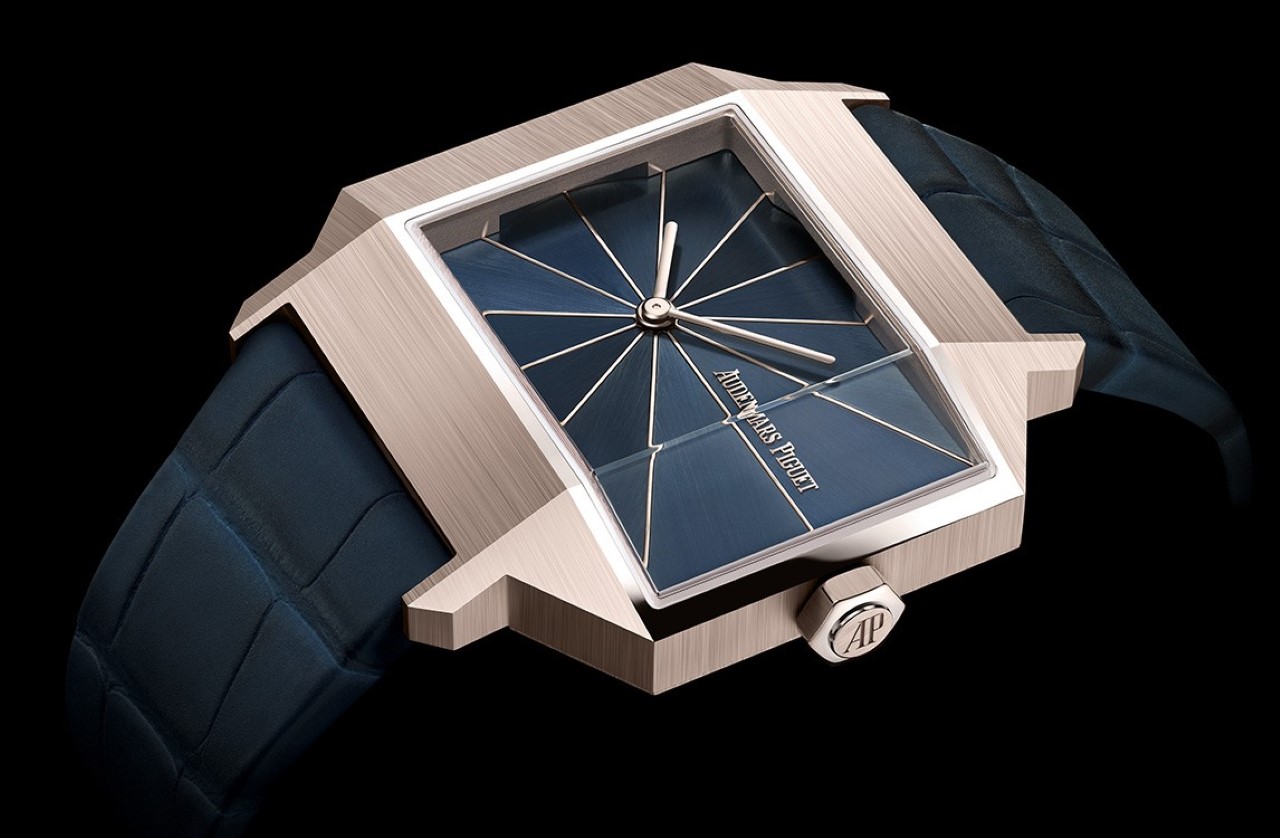
In this week’s Wristwatch Wednesday, I know you’re expecting part two of the watches I’ve regretted selling, which happens to be the AP 1998 Nagano Olympic Special edition. However, this [RE]MASTER02, a contemporary reinterpretation, is equally interesting, so I apologize; you’ll need to wait until next week for that piece while we explore the [RE]MASTER02.
Designer: Audemars Piguet
Since 1875, Audemars Piguet has followed its own path, combining watchmaking tradition with cutting-edge technology and pioneering new materials and designs. Over the years, the manufacturer has used a wide variety of materials, colors, and case forms, ranging from traditional geometries such as the circle, square, and rectangle to more unexpected trapezoidal or octagonal shapes.
Historical Context and Design Evolution
This exploration of form culminated in the early 1960s with a series of asymmetrical watches, all produced in less than ten pieces. During this period, Audemars Piguet also created several models with angular geometric shapes that were ahead of their time. The boundless creativity of these timepieces continues to inspire Audemars Piguet’s watchmakers today.
Model 5159
One of the remarkable pieces from this era is the Model 5159BA, launched in 1960 and produced in just seven pieces. This model is characterized by its asymmetrical 27.5 mm rectangular case crafted from 18-carat yellow gold. The design broke away from traditional watchmaking codes with its unconventional case shape and minimalist dial layout. The 5159BA’s dial features a series of intersecting lines, creating a sense of dynamic tension and movement. This model is currently on display in the Musée Atelier Audemars
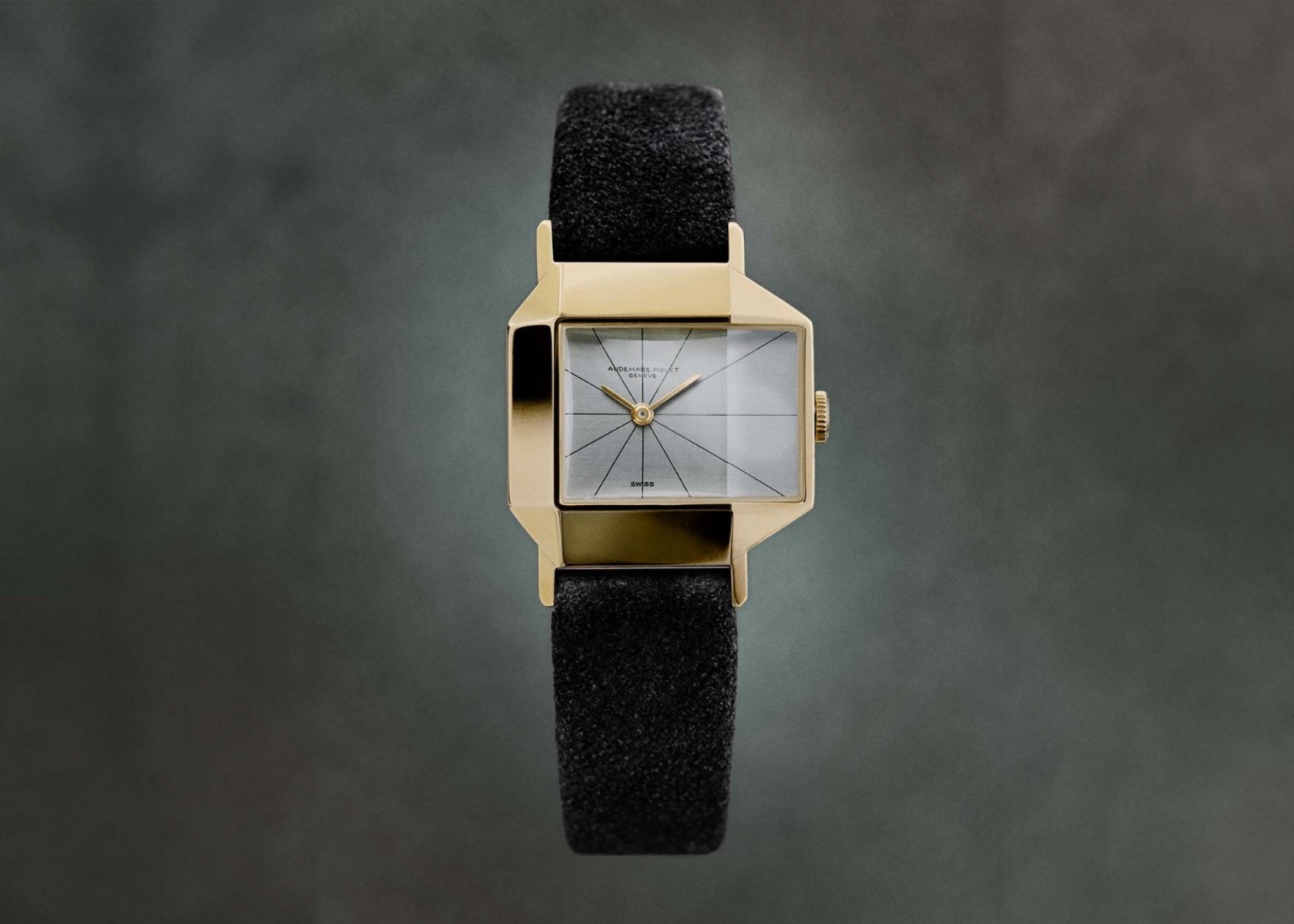
Audemars Piguet 5159BA Model, launched in 1960
The asymmetry of the 5159BA laid the groundwork for daring and unconventional designs in subsequent Audemars Piguet creations. Its bold deviation from traditional symmetry in watchmaking challenged the norms and set a precedent for the brand’s willingness to experiment with form and function. The intersecting lines on the dial, creating a dynamic and almost architectural feel, directly influence the modern reinterpretation seen in the [RE]MASTER02’s dial design, which employs geometric patterns to play with light and shadow.
Furthermore, the 5159BA’s minimalist approach, with its lack of extra detail, allowed the quality of materials and the purity of form to take center stage. This philosophy is carried forward in the [RE]MASTER02, where the design remains clean and uncluttered, allowing the unique properties of the sand gold alloy and the intricate parted dial to shine. The emphasis on material and form over decorative elements is a clear throughline from the 5159BA to the modern reinterpretation.
Model 5182
Another notable model from this period is the 5182, which showcases a more conventional round shape but retains the avant-garde spirit with its minimalistic dial and bold use of gold. The luxurious materials contrast the design simplicity, emphasizing the watch’s elegance and the era’s design ethos.

The 5182’s round case, while more traditional in shape compared to the 5159BA, still pushed boundaries through its minimalistic approach and luxurious execution. This model highlighted Audemars Piguet’s ability to balance traditional forms with contemporary design principles, a balance that is pivotal in the [RE]MASTER02. Using a parted dial with a unique brushing finish in the new model echoes the simplicity and elegance of the 5182’s design ethos.
By integrating high-quality materials like gold and focusing on the dial’s aesthetic purity, the 5182 set a standard for the brand’s future designs. The [RE]MASTER02 continues this tradition using the innovative sand gold alloy and a meticulously crafted dial. The modern piece reflects the historical model’s commitment to understated luxury and precision in craftsmanship, ensuring each design element serves a purpose while maintaining an elegant overall appearance.
The restrained use of design elements in the 5182 also influenced the [RE]MASTER02’s approach to watchmaking, where less is more. This philosophy is evident in the clean lines and thoughtful use of space in the new model’s dial and case, ensuring that each detail enhances rather than overwhelms the overall design.
Model 5167
The 5167 further pushes the boundaries with its triangular case, a bold departure from traditional watchmaking forms. This design exemplifies the influence of geometric experimentation with its sharp angles and unadorned surfaces. The dial is straightforward, focusing on functionality and readability, devoid of unnecessary ornamentation.
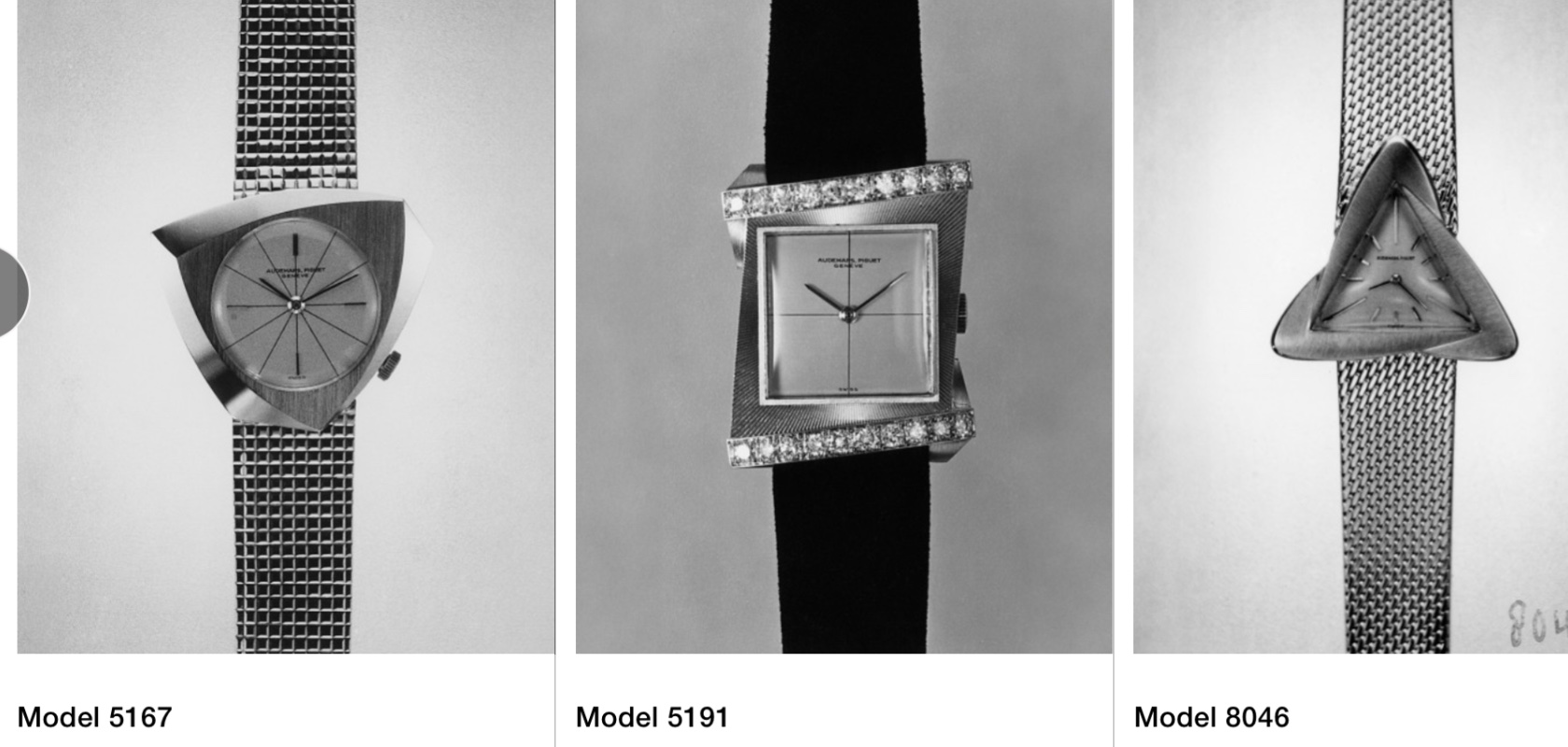
The 5167’s triangular case is a adherence to avant-garde design and experimentation with unconventional shapes. This bold approach is a direct precursor to the asymmetrical design of the [RE]MASTER02. The willingness to explore and incorporate sharp angles and geometric forms from the 5167’s design is evident in the modern reinterpretation’s case and dial.
The influence seen in the 5167’s unadorned surfaces and functional design translates into the [RE]MASTER02’s aesthetic. The new model’s parted dial and geometric partitions echo the sharp, clean lines of the 5167, emphasizing functionality while creating a visually striking piece. This inspired simplicity allows the watch to make a statement without excessive decoration.
The straightforward dial of the 5167, designed for readability and functionality, set a precedent for the [RE]MASTER02’s approach to its dial design. The modern piece incorporates clear, easy-to-read markers and a layout that prioritizes functionality, ensuring that the aesthetic serves the practical purpose of telling time while delivering a bold visual impact.
[RE]MASTER02: A Contemporary Reinterpretation
The [RE]MASTER02 Selfwinding pays tribute to a unique watch created in 1960 (Model 5159BA). Following in the footsteps of the [RE]Master01, launched in 2020 to reinterpret a rare chronograph from 1943, this new limited edition of 250 pieces features an asymmetrical 41 mm rectangular case in the new 18-carat sand gold alloy launched earlier this year and a “Bleu Nuit, Nuage 50” parted dial creating unique effects of light and texture.
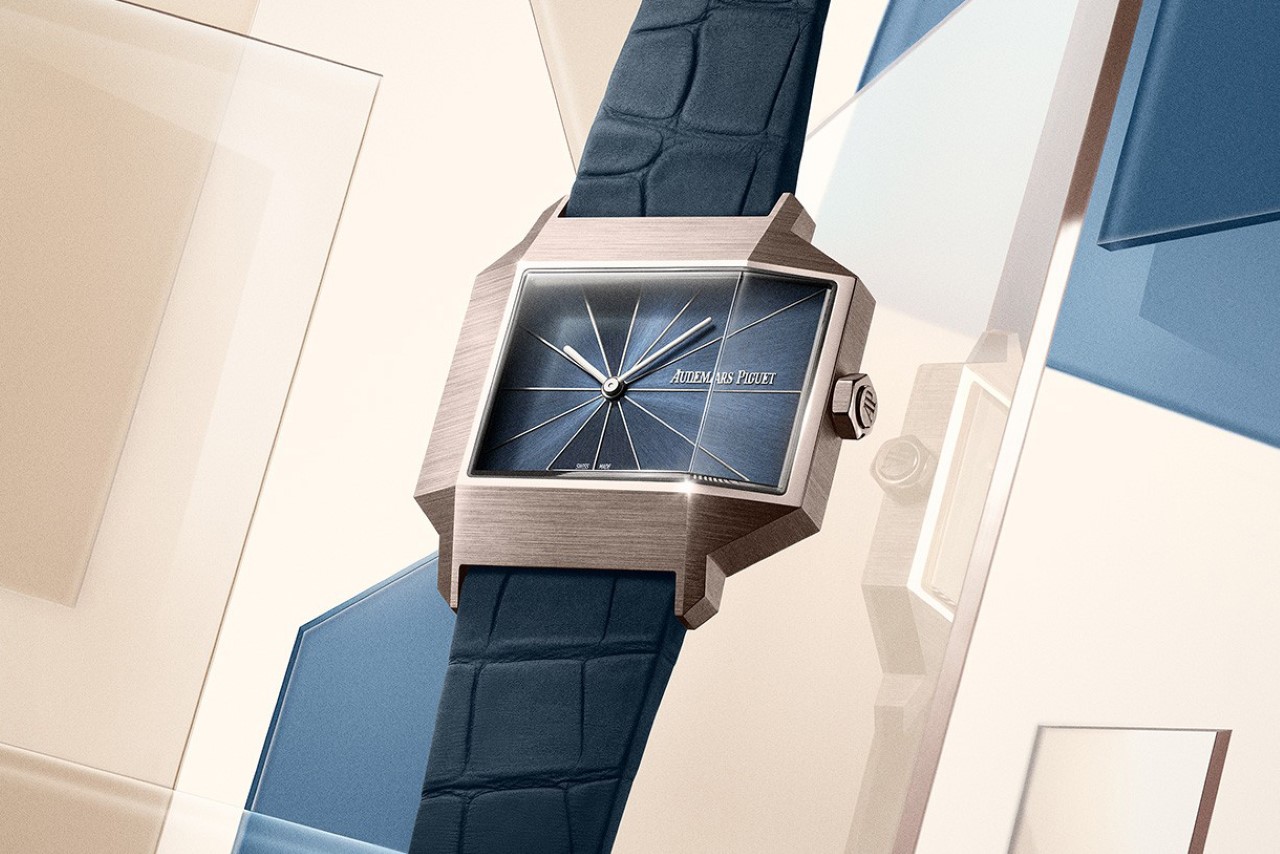
Combining vintage aesthetics with cutting-edge performance, this new reference is equipped with the Calibre 7129, an extra-thin hour-and-minute movement without date indication, based on the Calibre 7121. The interplay of historical inspiration and modern innovation in the [RE]MASTER02 showcases Audemars Piguet’s dedication to preserving its legacy while pushing the boundaries of contemporary watchmaking.
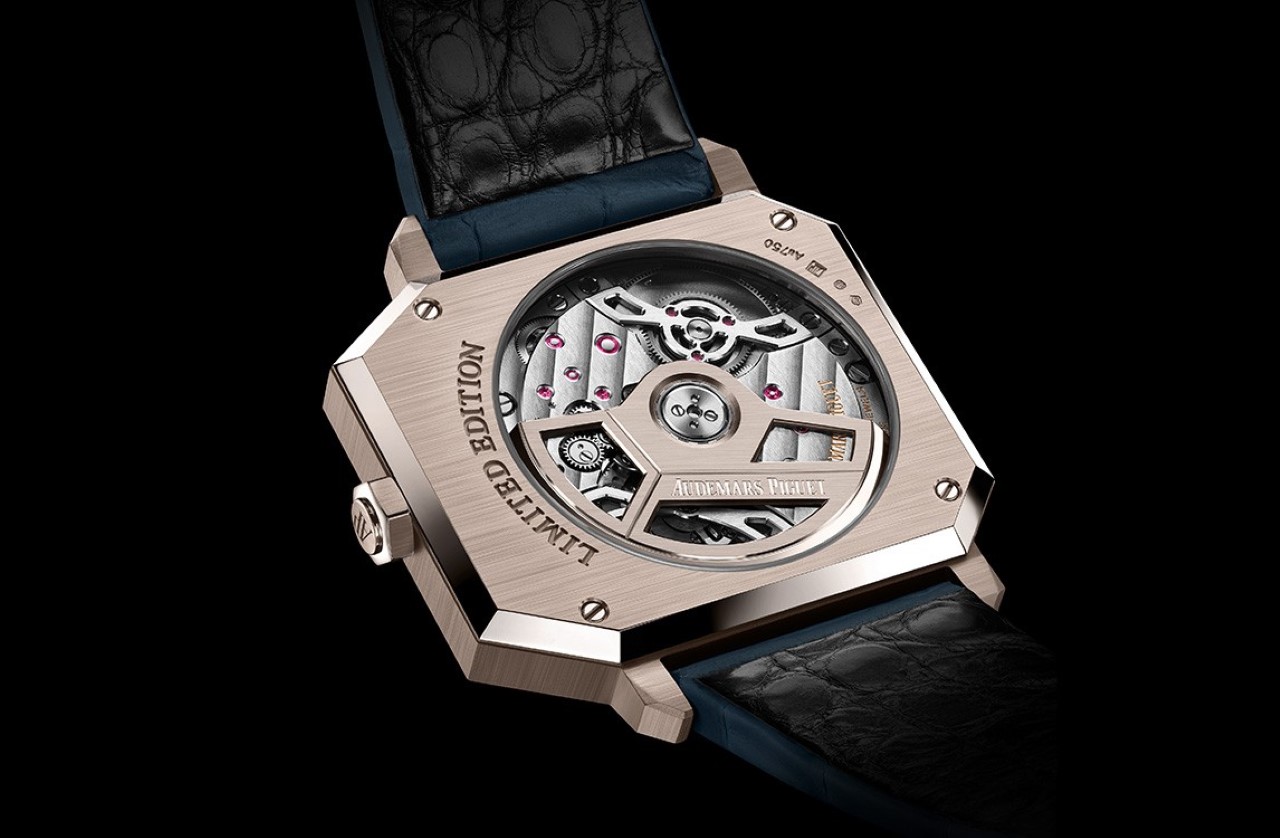
The asymmetrical case design of the [RE]MASTER02 directly draws from the 5159BA’s unconventional form, highlighting Audemars Piguet’s continued exploration of non-traditional shapes. The new sand gold alloy used in the case introduces a modern twist, with its variable hue adding depth and intrigue to the watch’s appearance. This innovative material pays homage to the past and sets a new standard for luxury watchmaking.
Case and Materials
The [RE]MASTER02 case is entirely crafted in sand gold, a new 18-carat gold alloy whose hue varies between white and pink gold depending on the light and the wrist’s movement. Launched earlier this year on a Royal Oak Selfwinding Flying Tourbillon Openworked reference, this new material, which takes its name from sand dunes, is composed of gold, copper, and palladium for a warm appearance. The case measures 41 mm in diameter and 9.7 mm in thickness, providing a modern, substantial presence on the wrist while maintaining an elegant profile.
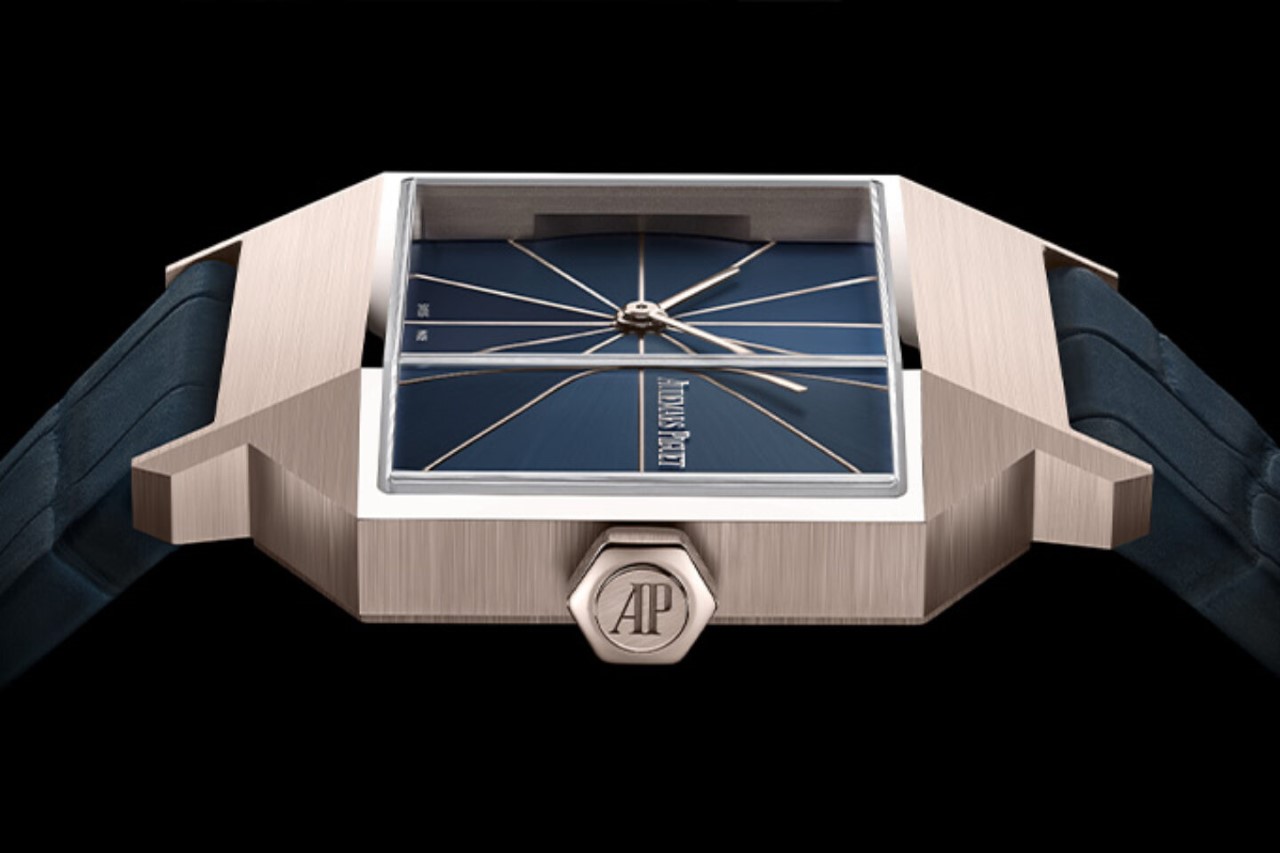
Audemars Piguet [RE]MASTER02
Inspired by historical models, modern craftsmanship techniques bring the case’s asymmetrical design to life. The clean lines and precise angles of the sand gold case enhance its aesthetic appeal and ensure it commands attention as a contemporary piece rooted in the brand’s rich history. The interplay of light on the sand gold surface creates a visually captivating effect reminiscent of the dynamic dial designs of the past.
Dial Design
The [RE]MASTER02 is enriched by a “Bleu Nuit, Nuage 50” dial that combines different geometries. It’s subdivided into twelve individually machined brass triangles decorated with a linear satin finish before being placed on a brass plate with minuscule feet. The triangles are separated by sand gold partitions that facilitate the reading of the time, creating a striking visual effect that changes with the light. The dial design pays homage to the geometric experimentation of the original 5159BA while introducing modern elements and materials.
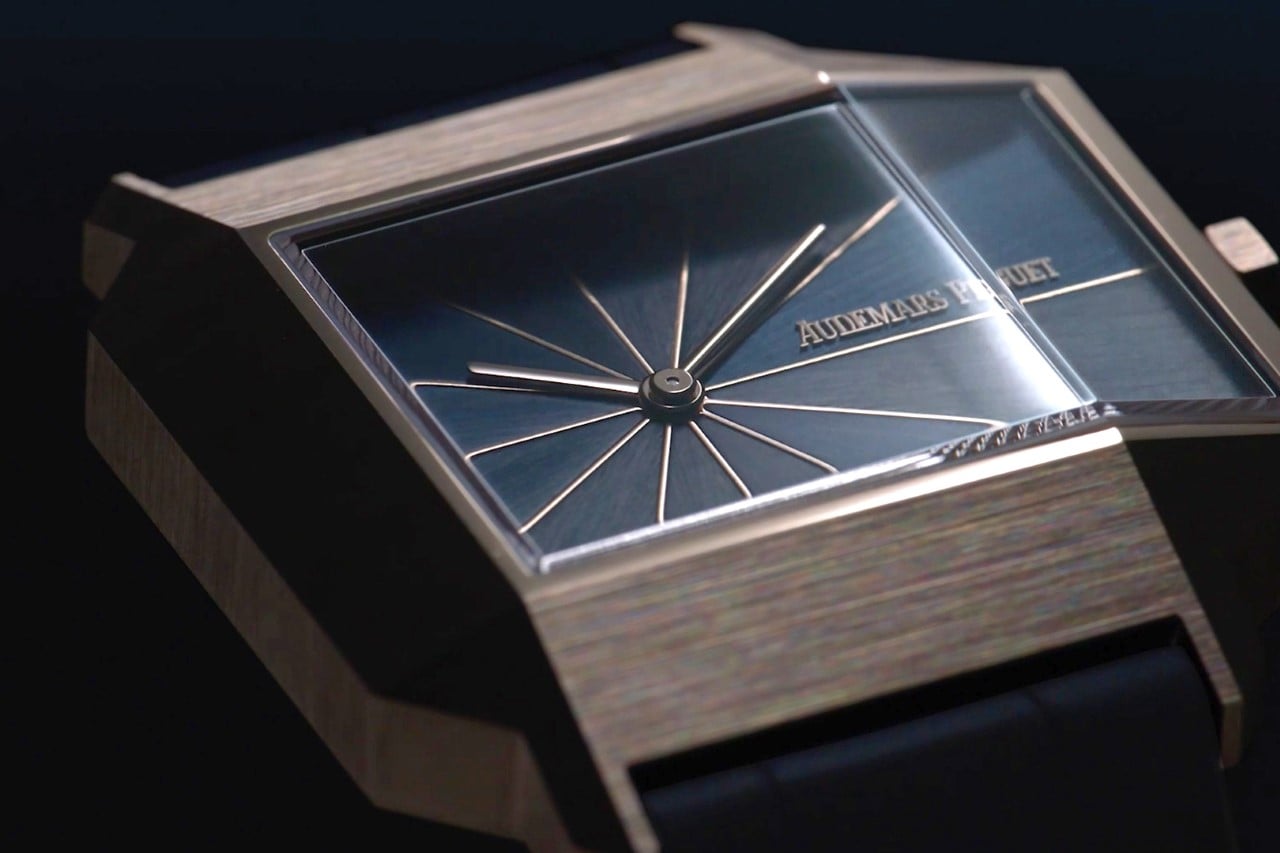
With its intricate geometry and meticulous craftsmanship, the parted dial design reflects the brand’s dedication to blending artistic design with functional precision. Using sand gold partitions enhances the dial’s readability and adds a touch of luxury and sophistication. This combination of form and function is a hallmark of Audemars Piguet’s design philosophy.

The “Bleu Nuit, Nuage 50” dial color is a nod to the historical palette used in past models, while the modern execution ensures it fits seamlessly into contemporary aesthetics. The interplay of light and texture on the dial creates a dynamic and ever-changing visual experience, much like the historical models it draw inspiration from. This blend of historical reference and modern innovation ensures that the [RE]MASTER02 is unique and timeless.
Movement and Technical Specifications
The heart of the [RE]MASTER02 is the Calibre 7129, an extra-thin self-winding movement that focuses on the essentials: hours and minutes. This movement evolves the Calibre 7121, known for its reliability and precision. The lack of a date function preserves the dial’s clean aesthetic, allowing the unique design elements to take center stage.

The Calibre 7129, with its extra-thin profile, ensures the watch maintains an elegant and slim form factor, making it comfortable to wear while retaining a sophisticated look. The focus on essential functions highlights Audemars Piguet’s commitment to precision and reliability, ensuring that the [RE]MASTER02 is a beautiful and highly functional timepiece.
By forgoing a date function, the [RE]MASTER02 stays true to the minimalist design ethos of its historical predecessors. This decision allows the watch’s unique design elements, such as the parted dial and sand gold case, to be the focal points, ensuring the overall aesthetic remains clean and uncluttered. This approach underscores the brand’s philosophy of harmonizing form and function.
Bracelet and Finishing
Complementing the sophisticated case and dial is a blue contrasted alligator strap with an 18-carat sand gold pin buckle. The strap’s rich color and texture add to the watch’s overall luxurious feel, making it an eye-catching addition to any wrist. The choice of an alligator strap enhances the watch’s elegance and provides durability and comfort.

The blue color of the strap complements the “Bleu Nuit, Nuage 50” dial, creating a cohesive and visually pleasing look. The contrast between the blue strap and the sand gold case further highlights the watch’s unique design elements, ensuring it attracts attention from every angle. This attention to detail in the choice of materials and colors reflects Audemars Piguet’s dedication to craftsmanship.
The finishing touches, such as the 18-carat sand gold pin buckle, ensure that every aspect of the [RE]MASTER02 exudes luxury and sophistication. This meticulous attention to detail in both design and execution ensures that the watch looks stunning and feels exceptional on the wrist, providing a genuinely luxurious wearing experience.
The post Audemars Piguet [RE]MASTER02: A Modern Homage to a 1960s Classic first appeared on Yanko Design.
from Yanko Design

0 Comments